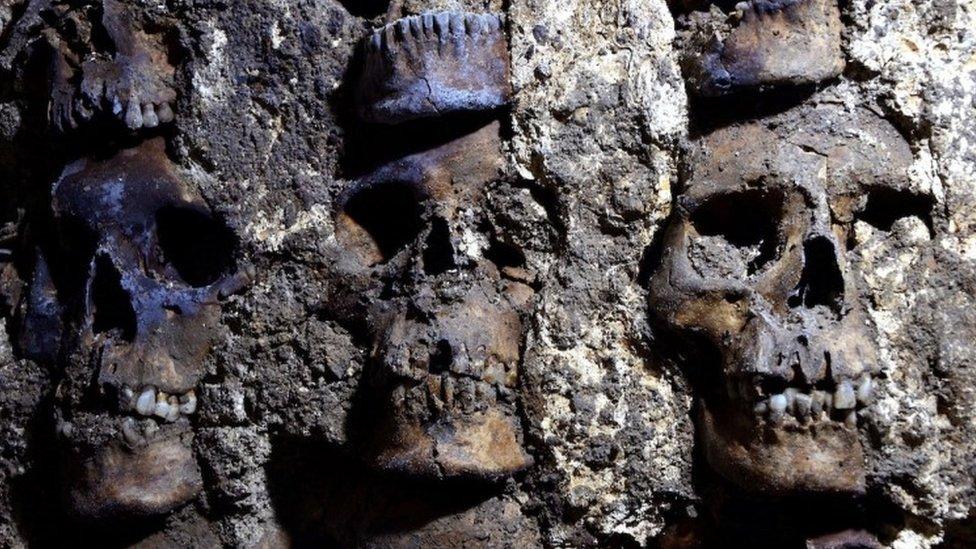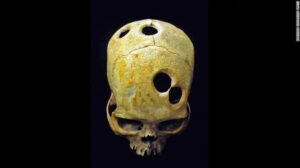
Did the Victorians know the future?
Long before YouTube unboxings and social media “reveals,” there was another kind of unwrapping — darker, slower, and far more sinister. In the drawing rooms of nineteenth-century Britain, guests gathered in their finest attire to watch the unveiling of an Egyptian corpse — or other deadly finds brought back from the sands of empire. Yes, mummy unwrapping parties was a thing.
Their Deadly Hauls Were Coffins, Canopic Jars And Bones Wrapped Like Trophies
Those sands stretched ruthlessly across North Africa and the Middle East, a delectable treat to the Victorian imagination. Every dune was believed to hide a relic; every buried chamber, a fortune. Explorers hacked through tomb walls, pried open sarcophagi, and ripped painted masks from the faces of the dead — all in the name of discovery.

The Victorians Loved A Good Mystery
They descended on Egypt like deranged magpies, feverish for gold and mystery, unable to tell reverence from greed. The desert winds buried their footprints, but the ships that followed carried the spoils home: coffins, canopic jars, beads of lapis lazuli, and bones wrapped like trophies.
Both Ladies And Gentlemen enjoyed the Marcabre Scene.
Silk skirts rustled as ladies adjusted their gloves. Gentlemen stood by the fire with glasses of claret, red against the candlelight. The host, perhaps a well-travelled antiquarian or a pretentious dilettante, which means a scholar who wished he were, or an educated person, approached the table where the mummy lay stretched out. The unwrapping would begin against bated breath, not unlike a modern ‘unboxing’ video, except this was live. Sly smiles and wide eyes would surround the table. A human being turned spectacle, not that they cared, of course!
With a surgeon’s knife, he began slicing through the resin-stiffened wrappings. As each layer came away, the air thickened with a scent of dust, bitumen, and decay. Guests leaned forward, fascinated and appalled, their lead-painted lips parted in polite horror.
When the final strip of linen revealed the shrunken face beneath, someone inevitably gasped and then applauded furiously.

Death As Theatre
The Victorians called it science. In reality, it was a prop for a party. The Victorians loved a good party and a get-together. The body became the conversational piece and the ‘unboxing’ the entrée. Some guests took fragments of bandage as souvenirs; others posed for sketches beside the corpse, much like a photograph to share with friends and family.
Mummy Brown Became The Latest Paint Colour
Egypt had become a quarry for Europe’s morbid curiosity. Entire tombs were emptied to satisfy collectors and dealers. Gold amulets, scarabs, painted coffins, papyrus scrolls — all packed into crates bound for London, Paris, or Vienna. Human remains were sold at auction, displayed in parlours, or ground to powder for mummia, a substance believed to cure illness and mixed by artists into a fashionable pigment called Mummy Brown. Painters spread the dead across their canvases — literally.
Clerymen Warned Them
Did they feel guilt? Some did. A few clergymen warned that disturbing the dead was a sin. That leaving the dead well alone was the wise thing to do. But Victorians brushed this silly notion aside in the same fashion they did when they brushed aside the unease that justified an empire. They knew centuries ago that unboxing was a thrill for everyone.
These bodies, they reasoned, were relics of a vanished people, curiosities, not kin. It was a convenient lie that kept the conscience quiet while the cargo ships left Alexandria heavy with stolen souls.
Victorians feared death profoundly but could not look away from it. Their homes overflowed with mourning jewellery, post-mortem portraits, and miniature coffins for children lost too soon.
They tried to master death by studying it, collecting it, owning it — as if possession could grant control.
And one wonders how they would feel today — those proud Victorians, propped up as curiosities themselves. They, too, met their deaths eventually. In the end, we all meet the same dust. Death escapes no one.
Help Us Keep History Alive
If you love history and our stories, then consider checking out our Ko-Fi page to get new insights into our work and the stories we tell.







